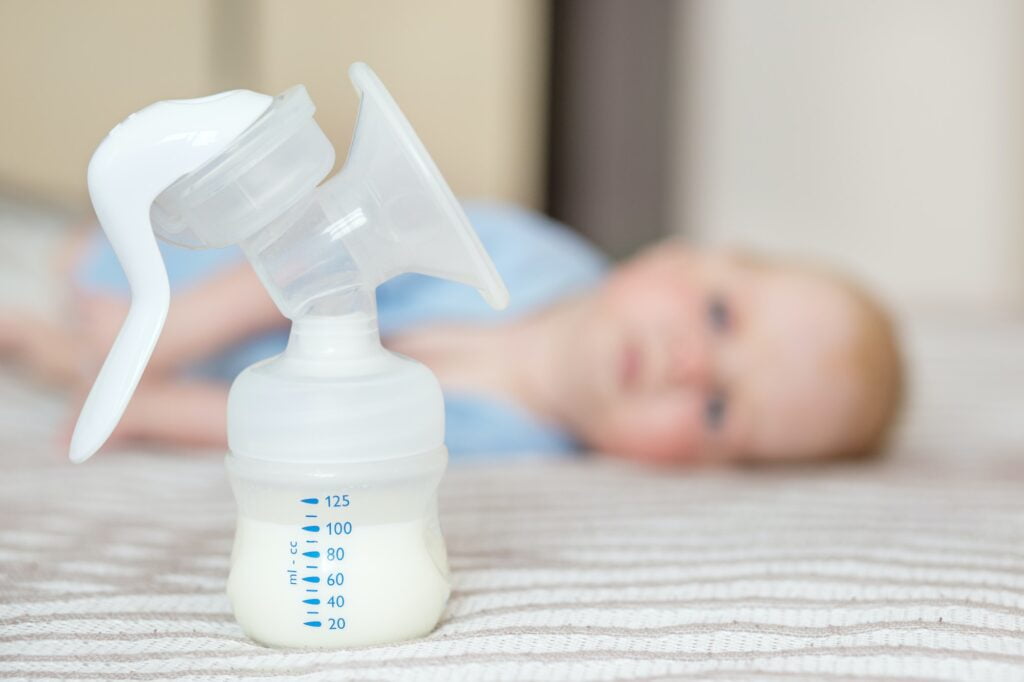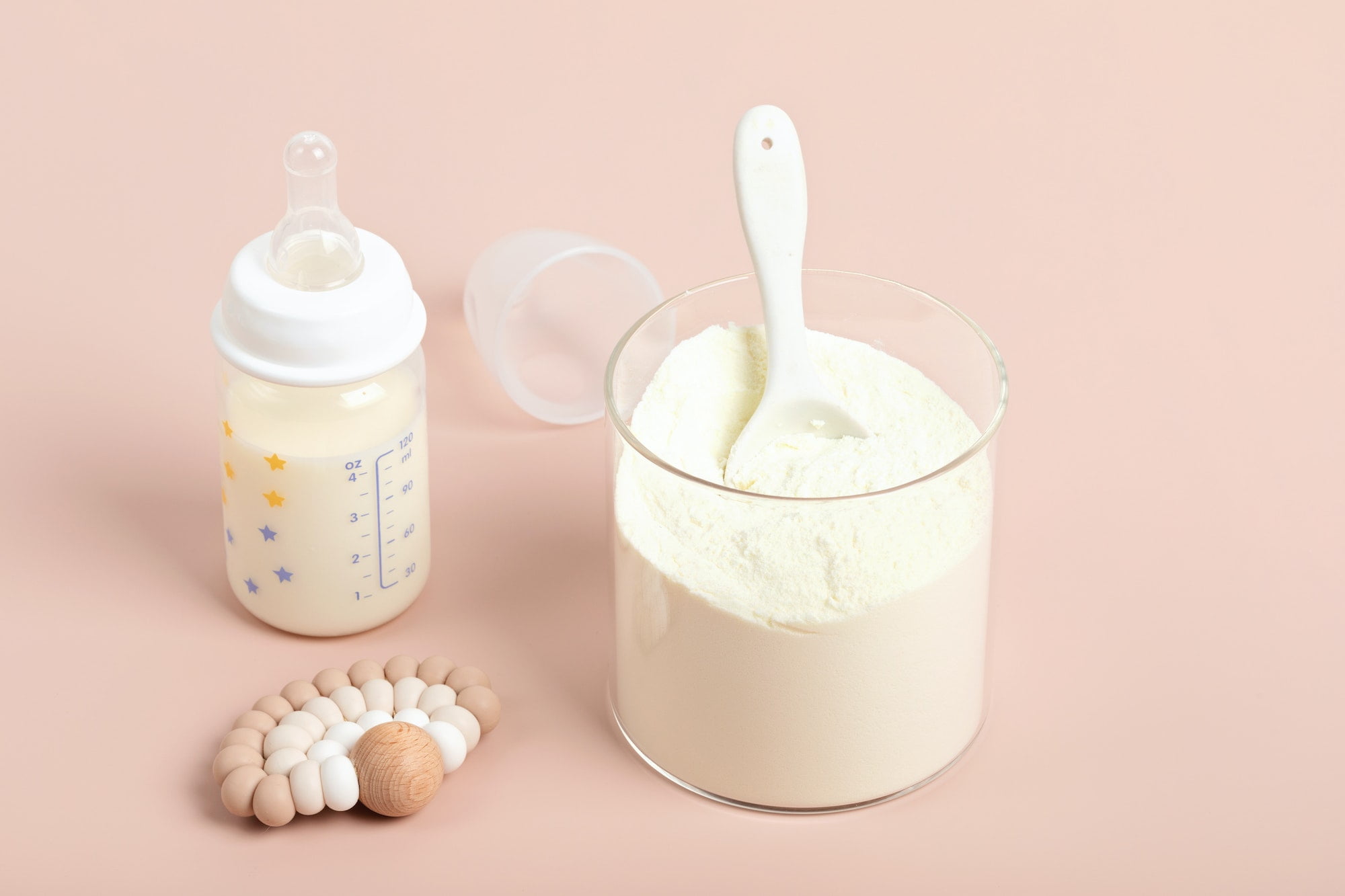Table of Contents
ToggleEver been up at the witching hour, clutching a 4-ounce bottle and pondering, “4 oz breast milk equals how much formula?” Welcome to the club! Parenthood is the wild west of the heart, a place where we’re roping in age-old traditions, today’s nuggets of wisdom, and that ever-present chorus of local parental pundits. It’s a thrilling rodeo, and you’re in good company.
Dive in as we unravel this formula mystery with confidence, warmth, and a good dose of professional know-how. By the end of this read, not only will you be well-equipped with the answer, but you’ll also understand the ins and outs of your baby’s feeding needs. Buckle up, folks—this is one journey you won’t want to miss, especially when it leads straight to your little one’s nutrition. Ready to embark on this feeding adventure?
The Basics: Understanding Ounces in Baby Feeding
In the world of parenting, ounces might as well be gold. It’s not just a measure—it’s your baby’s lifeline.
What does “4 oz” really mean for your baby?
For many new parents, the “4 oz” mark on a baby bottle is like a milestone. But what’s the real deal behind it? In a place where everything’s big and bold, it’s no wonder our babies’ appetites are just as robust. For your tiny tot, this isn’t just about volume. It’s about nutrients, comfort, and those precious moments of bonding. 4 ounces serve as a gauge of their growth, ensuring they’re getting just the right amount of nourishment as they flourish.
The difference between breast milk and formula consistency.
Mama’s milk versus the lab-created brew—breast milk and formula might fill the same bottle, but they aren’t the same liquid gold. While breast milk often has a thinner, more watery appearance, it’s packed with natural antibodies and nutrition. On the flip side, formula tends to be creamier, designed to mimic mother’s milk as closely as possible. Yet, even with advancements, it doesn’t carry the same unique properties as breast milk. So, while consistency can differ, both serve the purpose of feeding and fostering growth.

Alright, having grasped the basics, let’s move on and delve deeper into the nuances of these two feeding options.
Formula vs. Breast Milk: The Ounce-by-Ounce Breakdown
It’s the classic face-off: Mother Nature’s brew against science’s solution. But what’s the scoop when comparing them ounce-for-ounce?
Nutritional comparison.
Breast milk is often dubbed as ‘liquid gold,’ and for good reason. It’s a dynamic cocktail of nutrients, antibodies, and enzymes, adjusting to a baby’s needs as they grow. Formula, while impressive with its science-backed ingredients, is a static mixture, aiming to emulate breast milk’s richness. Both bring a lot to the table: breast milk offers tailored nutrition and immune boosters, while formula provides a consistent, nutrient-packed alternative for those who opt for it.
Answering “how much 4oz” in practical terms.
Diving into the nitty-gritty, 4oz of breast milk can differ from one feed to another—sometimes it’s more watery, sometimes richer, adapting to what baby needs at the moment. 4oz of formula? It’s consistency city. You’re getting the same blend every time. In practical terms, think of breast milk as a personalized chef’s special, and formula as your favorite, reliable chain restaurant dish. Each has its own place and perks in the world of feeding.
With a clearer picture painted, let’s move on and see which one might leave your little one feeling fuller for longer.
Is Formula More Filling Than Breast Milk? Let’s Dive In.
It’s a burning question on many parents’ minds. Which keeps those baby tummies fuller: nature’s own or the lab-crafted blend?
How hunger cues differ for formula-fed vs. breastfed babies.
Every little one speaks in their own adorable dialect of gurgles, coos, and fusses. But, here’s a tidbit for you: how you feed them plays a part in their hunger lingo! The breastfed brigade, munching on milk that’s naturally quicker to digest, might drop hints of hunger a tad sooner. Their signals? Gentle ones, like lip-smacking and eager nuzzling.
Now, if you’re pondering how “4 oz of breast milk equals how much formula,” keep in mind that the formula tends to be denser. This means our formula-fed munchkins might space out their feedings a bit more. And when they’re ready for that bottle? Their communication is a touch more direct – picture some restless wriggles or those unmistakable, heart-melting cries.
Personal stories of parents.
Jenna, a first-time mom, recalls, “I remember breastfeeding my little Leo. He’d gently tug at my shirt, his own sweet way of saying he’s hungry. Every time he did that, my heart just melted!” Meanwhile, Ryan, a doting dad of two, shared, “With my eldest, Maddie, we went the formula route. It was like clockwork. Every few hours, she’d get fidgety, and I knew it was time. But with Jake, our breastfed baby, I had to really tune in. Those soft whimpers and searching eyes said it all.”
Deciphering those cues is truly an art. As we wrap this up, let’s move on to explore how these feeding patterns play out as our babies hit that exciting 4-month mark.
A Look at the 4 Month Milestone: Feeding Needs and Patterns
As our tiny humans approach the 4-month mark, their appetites and feeding habits shift in intriguing ways. What’s up with that?
How many oz of breast milk for a 4-month-old?
Hey, parents! If you’ve noticed your little munchkin’s hunger growing with their adorable baby rolls, you’re not alone. By four months, many breastfed babies typically guzzle down between 4 to 6 ounces every 3-4 hours. But always remember, each baby dances to their own rhythm. Some days they’ll chug it down like they’re in a milk-drinking contest, and on others, they might just sip and savor. So, don’t stress the numbers; let your baby lead the way.
Formula needs: Understanding the scoop-to-ounce ratio.
Navigating the world of formula can sometimes feel like you’re mastering a fancy barista drink. But fear not, we’re here to break it down. Generally, for most brands, it’s a simple 1 scoop to 2 ounces of water. By four months, many formula-fed tots might take anywhere from 4 to 8 ounces every 4-5 hours. But, like with everything baby-related, it ain’t a one-size-fits-all. Keep an eye on those hunger cues, and you’ll ace this.
Alright, you savvy parent, as we’ve dug deep into the 4-month mark, a curious question pops up – can you mix things up a bit with formula and breast milk? Let’s move on and find out!
Can You Mix and Match? Formula, Breastfeeding, and Everything In-Between
When it comes to feeding, many parents wonder if they can have a bit of both worlds. Let’s dive in, shall we?
Switching between breast milk and formula: Is it confusing for babies?
You might’ve heard some whispers on the playground, but here’s the real deal: while some babes might need a minute to adjust to the switch, many little troopers take it in stride. Each baby’s taste buds and preferences are as unique as their tiny toes. It’s all about easing into it. Start slow, watch for reactions, and remember that a hiccup or two doesn’t mean it’s game over. It’s just part of the adventure.
Tips and tricks from seasoned parents.
Alright, brace yourselves for some genuine insights straight from the parenting frontlines! First off, let’s clear the air around the age-old query: “4 oz breast milk equals how much formula?” Now, while we’re on the topic, some seasoned MVP parents are of the belief that daytime feeds, when the baby is bright-eyed and bushy-tailed, are the perfect time to slide in that formula.
Others champion the cause of brand loyalty, emphasizing the importance of sticking to one formula brand for that consistent touch. For those mixing both worlds – breast milk and formula in one bottle – the drill is to blend the formula with water first, and then pour in that 4 oz gold (or however much you’re using) of breast milk. The mantra to swear by? Maintain your cool (in the bottle and in the soul). If Plan A misses the mark, deep breath in, recalculate, and swing with Plan B.
Feeling more equipped? Great! But there’s more gold to mine. Let’s move on to nailing those measurements and setting you up for parent-of-the-year status.
The Lowdown on Measurements: A Guide for New Parents
Navigating the world of ounces, bottles, and baby feeds? We’ve got your back! Dive into the know-how below.
Properly measuring 4 ounces: Breast milk vs. formula.
So, you’ve got the bottle ready, but how do you ensure you’re serving up the right amount? When you’re dealing with breast milk, it’s pretty straightforward: 4 ounces is 4 ounces. But formula? It gets a tad trickier. Formula powder can settle, so always give that can a gentle shake before measuring. When you scoop, don’t pack it down; just glide your knife over the top to level it. And remember, always add water first, then formula, to get the most accurate measurement.
The scoop on scoops: How many scoops of formula for 4 oz?
Alright, rookie parents, here’s the skinny: while most standard formulas recommend one scoop of powder for every 2 ounces of water, always, and we mean always, check the label. Brands can be like your baby’s moods – they vary! Keep a keen eye on the manufacturer’s instructions. Once you’ve got your ratio locked down, it’s all smooth sailing.

Measurement mysteries solved! Feeling more confident? We thought so. But, if you still have some burning questions, fear not. Let’s move on and get those queries squared away.
Addressing Common Queries
Stepping into the world of parenthood with a slew of questions? We’ve got you covered. Let’s dive deep!
Is alternating between breast milk and formula beneficial?
Absolutely, many parents find this approach, often dubbed “combo feeding”, to be a real game-changer. It offers flexibility—mom can catch a break or head to work, while someone else takes over the feed. Plus, the baby gets the best of both worlds: the antibodies from breast milk and the fortified vitamins from the formula. But as with everything, there’s no one-size-fits-all. Trust your gut and your pediatrician’s advice.
How to choose: Breast milk, formula, or both?
This is like the million-dollar question, right? The answer? It’s all about what works best for your family. Some parents swear by exclusive breastfeeding, others find formula to be their saving grace, and then there are those who walk the middle ground. The key is balance, and making informed choices. Do your homework, chat with your doc, and listen to your little one’s cues.
Understanding different formula types and their nutritional variances.
Diving into the formula aisle feels akin to decoding the mystery of “4 oz breast milk equals how much formula.” It’s a vast universe out there! From cow’s milk-based to soy-based, to specialized formulas – navigating through the choices can feel like solving a complex puzzle. Each type is tailor-made to cater to specific baby needs.
While cow’s milk formulas, often likened in nutrient richness to the 4 oz mark in breast milk, are quite popular, soy-based alternatives are a blessing for those lactose-sensitive little ones. And for the ultra-sensitive tummies? There are hypoallergenic and specialized formulas waiting in the wings. Throughout this maze, two guiding lights remain: always read the label and seek wisdom from your pediatrician.
FAQs related to 4 oz breast milk equals how much formula
Navigating the baby feeding scene can raise a bunch of questions. Let’s tackle some common ones, shall we?
Why might some parents opt for formula over breast milk?
For many, it’s about flexibility. Moms might have medical reasons, a demanding job, or simply prefer convenience. Plus, it offers partners a chance to share feeding duties, making it a team effort.
Is it safe to mix breast milk and formula in one bottle?
Absolutely, but with a caveat. Ensure both are at similar temperatures to avoid any curdling. Also, always follow hygiene practices and remember not to reuse any leftover mix.
How do you store a 4 oz bottle of breast milk or formula?
Breast milk? Cool it promptly and stash in the fridge or freezer. Formula? Use within 24 hours if refrigerated. Both should be stored in sterile, sealed containers, and always check guidelines for safe durations.
From ounces to FAQs, we’ve walked this journey side by side. Whatever choices you make for your lil’ munchkin, remember, love’s the main ingredient! Stay informed, trust your gut, and enjoy every drooly moment. Cheers to your baby-feeding adventures!
Wrapping Up
From ounces to choices, we’ve traversed the world of baby feeding together, haven’t we? Let’s round things up!
Final thoughts on the 4 oz dilemma.
When it boils down to the “4 oz debate”, there’s no definitive right or wrong. Every baby is unique, with their own appetites and needs. Whether you’re team breast milk, team formula, or a bit of both, the goal is a happy, healthy baby. Keep those lines of communication open with your pediatrician, and trust your parental instincts. You got this!
Teaser for a future related topic.
Oh, and before we sign off, here’s a little teaser: Ever wondered about the evolution of baby foods and how they’ve changed over the decades? Dive into history, nutritional science, and a whole lot of nostalgia with us soon. It’s gonna be a delicious journey!
Related Articles:









